REVIEW – The A. Lange & Sohne Zeitwerk Striking Time (video, live pics & price)

It was in 2009, and it was a total blast. A. Lange & Söhne, a conservative member of the German School of Watchmaking, a strong actor of our beloved industry, more used to create sublime but classical, understated dress watches, known all around the community of collectors for being the creator of the desirable Lange 1 and the superb Datograph, this exact company launched the Zeitwerk, a disruptive watch at first that became then iconic, for being in every way faithful to what the Saxonian manufacture is. Surprisingly, the Zeitwerk doesn’t look like a Lange but it is totally a Lange watch. This is the reason why we had to review the A. Lange & Söhne Zeitwerk Striking Time.
Introduction to the A. Lange & Söhne Zeitwerk
What makes the Zeitwerk so special in the A. Lange & Söhne collection? Is it the technology? Well, of course it has something special hidden in its movement, but so does the Richard Lange Perpetual Calendar Terraluna for example. Is it its design or its case? Not really, as clearly, it has many of the elements that compose a A. Lange & Söhne. Is it the quality, the finishing, the execution? Neither, as the Zeitwerk is a true masterpiece, like all of the other watches from Lange – and it is finished with the most precautious attentions. What is it then? Well, simply its display and the way it tells and sings time, something that could have been expected from a bold, unchained, independent watchmaker but not from an ultra-serious and traditionalist manufacture like A. Lange & Söhne. The Zeitwerk is a surprise, mostly because who created it rather than what it really is.
The very first A. Lange & Söhne Zeitwerk has been introduced at the SIHH 2009 – you can see an example of this early and non-chiming Zeitwerk here. It has been a surprise for two reasons. First because of its display, that tells time via three instantaneously jumping discs, using a complex constant force mechanism and an innovative way to distribute the energy of the movement to the display. Then, as we told you, it was a surprising watch because of the brand which introduced it. You have to understand that A. Lange & Söhne is not MB&F or URWERK. They were used to create watches with normal hands, with classical display, with understated look and with great simplicity and elegance. It’s German watchmaking. However, with this unique display, the Zeitwerk created huge discussions and loud reactions – that, besides being loud, were also astonished… Why that? Well, after the first perplexed moments, you clearly see the raison d’être of the Zeitwerk, its link with the rest of the watches, its integration in the family.
For many reasons, the Zeitwerk is strange and at the same time, it features many of iconic elements of the Saxonian manufacture: the use of oversized discs, a clear display, the management of energy and an overall look that is certainly in the vein of Lange’s DNA. We reviewed many watches from A. Lange & Söhne (the Lange 1, the Datograph, the Double Split or the 1815 Chronograph) and for this reason, it makes sense for us to have a deeper look at this special watch, the A. Lange & Söhne Zeitwerk Striking Time.
Overall appearance and features
You wont be surprised to know that the A. Lange & Söhne Zeitwerk Striking Time is a complex, superlative, astonishing watch (it is actually my all-time favorite watch of Lange, more than the ultra-high-end Decimal Minute Repeater edition introduced this year, at the SIHH 2015… but I’ll explain that to you later). It is easy to be astonished in front of such a watch when you’re, like me, a collector and a passionate person. It is more difficult to deeply and objectively review it, mainly because you have to forget your love for the watch itself. So, for the coming lines of text, I’ll put my joy back in the vault, will throw the key in the water and let it where it is for a while.
Before going into the technical and visual aspects of the Zeitwerk Striking Time, what do we have? This watch carries the digital display (no worries, it’s 200% mechanical) of the classical Zeitwerk, with 3 digits displayed by 3 independent, instantaneously jumping, oversized discs, a small second and the signature Ab/Auf indicator (the Up / Down power reserve indicator, just like the Datograph Up / Down). This edition, the Striking Time, adds an extra-function, a chiming function to be precise, that, together with the jumps of the discs, will strike the hours and the quarters. It is in fact an hybrid system, like a petite sonnerie, but without striking all the indications of time. We’ll get back on this later.
Besides this unique display, the overall watch remains quite classical and thus, very Lange. Same fonts, same logos, same execution of the movement, same design of the case (same superlative quality also). There’s finally no doubt to have, we’re in front of a A. Lange & Söhne watch. The Zeitwerk Striking Time just adds a bit of controlled eccentricity and a lot of complexity to the movement – because this apparently very simple and legible display requires several mechanical tricks to work flawlessly. It’s an impressive watch, mixing the attributes of Lange (visually and technically) with specific clues, to make it somehow special in the collection.
Dial and hands
The dial of the A. Lange & Söhne Zeitwerk Striking Time (and its absence of hands) is certainly what make this watch very unique in the Lange collection. Even if it has been a controversial watch at the time of its introduction, it is clearly nowadays recognizable among every other watch, whatever the brand or the price range. It is a unique, yet now iconic, timepiece that every single aficionado will spot in a wink. The difficulty had been to implement a digital display in a watch that had to be recognizable as a Lange, making it legible, more modern and bolder, without losing the roots of the Saxonian manufacture. The Zeitwerk is certainly far from an entry-level Saxonia in terms of design, however both share some elements that make the Zeitwerk part of the Lange Family.
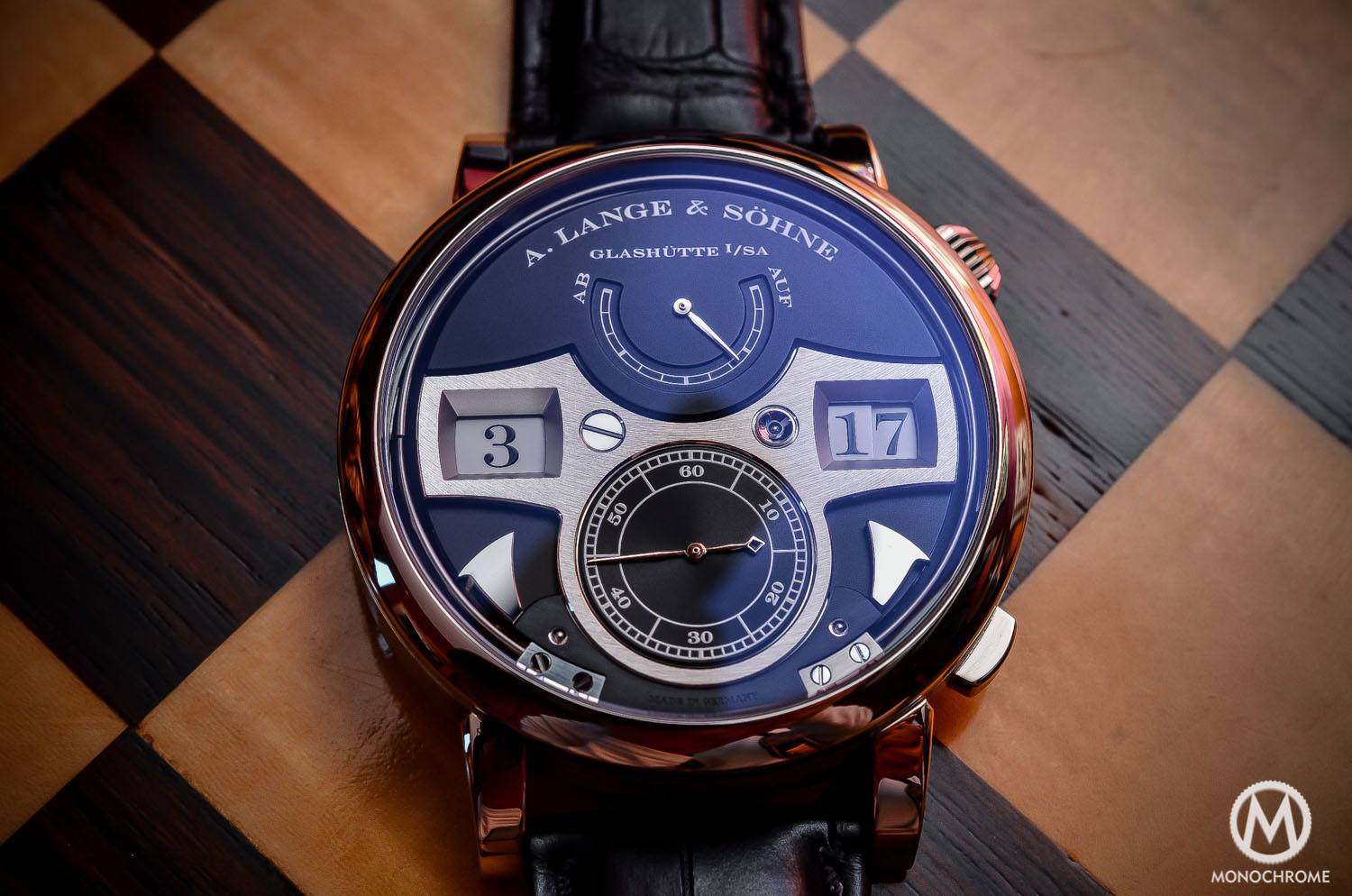 The entire dial is constructed around the central bridge, where the timing indications are displayed – meaning the hours, the minutes and the seconds. This metallic bridge, made in untreated German silver like the movement, encloses a first window at 9 for the hours, a second window at 3 (showing two digits, one for the tenth and one for the other digit of the minutes) and finally the large sub-dial of the seconds at 6. This time-bridge, contrasting with the black dial (especially on this white gold / black dial edition), is shaped in order to emphasize the indications, while leaving space for the digits, circling the seconds and being cut to leave some space for the power reserve indicator. Its shape is perfectly balanced and most surprisingly, the screw and the large jewel don’t feel awkward in this highly luxurious context. It even brings a bit more technicality, echoing the modernity of the display.
The entire dial is constructed around the central bridge, where the timing indications are displayed – meaning the hours, the minutes and the seconds. This metallic bridge, made in untreated German silver like the movement, encloses a first window at 9 for the hours, a second window at 3 (showing two digits, one for the tenth and one for the other digit of the minutes) and finally the large sub-dial of the seconds at 6. This time-bridge, contrasting with the black dial (especially on this white gold / black dial edition), is shaped in order to emphasize the indications, while leaving space for the digits, circling the seconds and being cut to leave some space for the power reserve indicator. Its shape is perfectly balanced and most surprisingly, the screw and the large jewel don’t feel awkward in this highly luxurious context. It even brings a bit more technicality, echoing the modernity of the display.
Of course, with such large digits, time reading is extremely easy. No adaptation period is required, as reading the time feels totally natural (something that isn’t always true in watches with a different display). The digits on the 3 discs are highly legible, contrasting and they are reminiscent of the oversized date, so dear to Lange. You clearly have here the inspiration for the Zeitwerk. This date, that can be found in the Lange 1 since its introduction in 1994 and in the Datoraph (among others) is one of the hallmarks of the brand and using this feature to create a watch like the Zeitwerk is clever, especially to reassure the old-time collectors. What impresses much is how fast these discs jump and how accurate they are (this is even truer at the end of each hour, when the three discs jump together in a wink). This is of course all due to the movement and a specific constant-force device. More to read later, in the movement paragraph.
One last thing has be explained on this dial, and not the least important: the hammers and the gongs. Until now, everything we showed you was similar to the normal (understand non-chiming) edition of the Zeitwerk – the one that we reviewed here. In fact, the display, the jumping discs, the power reserve, the hands, the dial itself… everything is similar on both the normal and the Striking Time edition. Everything expect one important feature, located on the the lower half of the dial: the striking mechanism. The empty spaces on each side of the small second dial of the normal Zeitwerk are now filled with two hammers (similar in every way to a minute repeater). Of course, considering you’re looking at a A. Lange & Söhne, they are superbly finished: black polished to the perfection, extremely sharp and beveled. To have a reasonable height, these hammers are placed into recessed parts, located on a level below the rest of the dial. The other (huge) difference comes from the void between the dial and the bezel. It allows to place the two gongs, on which the hammers will strike to produce the beautiful sound of this Zeitwerk Striking Time.
Case and design
The case of the A. Lange & Söhne zeitwerk Striking Time is very traditional and faithful to the rest of the brand’s collection. It is here made of 18k white gold (note that the Zeitwerk Striking Time also exists in pink gold and in platinum) and shows the classical design of the A. Lange & Söhne watches: round central case with brushed casebands, large convex bezel fully polished and solid lugs with a small recess part at the attachment points. The crown that sets the time and winds the movement is placed at 2 and a pusher at 4 allows to switch off the striking mechanism.
Considering the extra-gongs around the dial, the case is larger than the normal Zeitwerk, measuring here 44.2mm (vs 41.9mm). The Zeitwerk Striking Time is also slightly thicker at 13.6mm, due to the addition of the striking mechanism and the presence of the hammers on top of the dial. We’re not going to hide the fact that this watch is big and weights a lot. It is far from being a 35mm Saxonia Manual Wound. However, it remains pleasant to wear and rather understated (for the neophytes of course, as connoisseurs will immediately spot what you have on your wrist).
VIDEO – The A. Lange & Söhne Zeitwerk Striking Time in action
On the video, you can see how fast and how precise the jumps of the discs are. Furthermore, they are here connected with the striking mechanism, which makes an incredible amount of energy to liberate in an extremely short lapse of time. This is now time to explain how this can be managed.
Movement
Here begins the complicated part. Frankly, the Zeitwerk – and even more the Zeitwerk Striking Time – is a complex watch, not only in terms of display but mainly in terms of management of the energy. The idea of having 3 discs that instantaneously jumps to display the hours, the tenths and the minutes, is superb. However, it creates two main issues: how to generate enough force to make the 3 discs jump simultaneously in a lapse of time so short and how to store this energy? The answer given by A. Lange and Söhne has to be found on the back of the watch, with a remontoire to release the power with constant force, once every minute.
The energy is given by an extra-strong mainspring. Having 3 discs to move in less than a second is a real challenge for the movement. First, the move is not continuous but disrupted (one jump per minute for the extreme right disc, one jump every ten minutes for the center disc and one jump per hour for the left disc). The worst part of the show comes every hour (at 7.59 or 8.59 for example) when the 3 discs have to jump at the same instant. It is not like moving a set of hands. It requires a crazy amount of energy. That’s the reason why this extra-strong mainspring and the important amount of torque it brings. However, this solution has one main default. Like in every watch, the spring tends to deliver more energy when fully wound and less when it unwinds. And this is even more true with a very strong mainspring. And that’s a huge issue for chronometry (accuracy over the power reserve).
We told you, the solution is a patented constant-force escapement that takes place between the barrel wheel and the regulating organ (balance wheel). The mechanism is showed into the movement by a sort of gear train hold in place by a anchor bridge. A blue spring stores energy during a whole minute and delivers it for each instant jump. Thus, it brings enough power to the gears to make the discs jump instantaneously and also disable the undesirable effect of the strong spring on accuracy – it stabilizes the rate of the movement across the entire 36-hour autonomy period. It drives the balance with nearly uniform power, regardless of the state of wind of the mainspring and unaffected by the energy-consuming switching cycles that take place in one-minute intervals. This is state-of-the-art horology: Constant-force escapement (or remontoire) are not common features. Only a few watchmakers can achieve such a technology and A. Lange and Söhne uses something similar in the Lange 31 or in the Richard Lange Terraluna.
Then comes the issue of the striking mechanism. Having 3 discs that jump simultaneously was certainly not complicated enough for the watchmakers of A. Lange & Söhne, so they added a mechanism that actuates one of the two hammers, at the exact same instant than the discs jump. The Zeitwerk Striking Time works almost like a “petite sonnerie” – a watch that strikes the hours and quarters in passing without repeating the hours at each quarter (source: Fondation de la Haute Horlogerie). Here, you don’t have the ability to repeat the time, meaning that you cannot, by actuating a trigger, have an acoustic display of the entire time. The Zeitwerk Striking Time will only have a chime every quarter and every hour (and that’s already impressive). The quarters are indicated by the right hammer (with a higher pitch) while the hours are indicated by the left hammer (with a lower pitch). However, on the contrary of a normal petite sonnerie that strikes the hours (meaning 6 strikes when it’s 6 o’clock, 11 strikes when it’s 11 o’clock…) and that strikes that quarters (2 strikes for the half-hours, 3 strikes for 3/4 of an hour), the Zeitwerk Striking Time only strikes once.
With the normal Zeitwerk, A. Lange and Sohne did already quite an impressive job to manage the energy. The use of a constant escapement allows the jump of 3 discs instantaneously, right? Without making any changes to the mainspring, to the remontoire or to the escapement, this movement still have enough power stored to actuate a strike train. Impressive! By using the same base movement and adding a striking function (located on the dial side, at 6), the Zeitwerk Striking Time keeps the same 36 hours power reserve. These extra reserves of energy are used by the chiming mechanism to tension the springs that actuate the two hammers.
Finally, there’s the execution and the look of this movement. How not to be impressed by such exhibit of haute horlogerie? Like every movement made by A. Lange & Söhne, the Calibre L043.2 of the Zeitwerk Striking Time features bridges and mainplate made of untreated German Silver (that will gain a bit of warmish patina over the years) and every single part is meticulously finished by hand. The flat surfaces are adorned with circular graining or Glashütte ribbings, the steel parts are black polished, the angles are chamfered and polished, the largest jewels are inserted in gold chatons, secured by blued screws and the cock bridge and the escapement bridge are engraved with a floral pattern (done by hand of course). One last thing to notice is the anchor bridge that holds the constant force device (the remontoire). It alone sums up the quality of the movement. It’s superb, demonstrative, exceptionally well finished… Add to that the in-house free-sprung balance wheel and the fact that all the rest is, of-course, made, assembled and finished in the little town of Glashütte, Germany.
Conclusion
In one word: MASTERPIECE. I know, I’ve told you at the beginning of this review, the A. Lange & Sôhne Zetiwerk Striking Time is my all-time favorite watch from the Saxonian manufacture. There are factual reasons for me (and I guess for a lot of collectors and watch-enthusiasts) to love this watch: the complexity of the display, the incredible management of energy (even when adding a striking feature), the beauty and the balance of the dial or the exceptional execution of the movement. All of this can’t be denied.
Besides these reasons, there are also intangible factors. This watch has to be seen as a controlled revolution at Lange. Why? It is far away from the other creations of the brand in terms of display, it features an almost forgotten complication (a sort of petite sonnerie) but at the same time, Lange cleverly adapted all of this strangeness in a watch that is not shocking for the collectors, in a watch that can easily be affiliated to a Lange. It is at the same time a controversial and a reassuring timepiece – not too classic, not too original. It is properly mastered. Why do I prefer this A. Lange & Söhne Zeitwerk Striking Time to the more complicated Decimal Minute Repeater edition? Simply for all these non-obvious reasons, because I love the restrained petite sonnerie more than the demonstrative minute repeater (don’t get me wrong, it is an impressive piece). However, the Zeitwerk Striking Time has an extra-charm that talks to me more.
Is there any faults? Well, some will say that it’s too big, too thick, too heavy or that the power reserve is too short (and in fact, they will be right to do so) but on the other hand, who really cares. Of course, the price makes it an inaccessible watch for 99,99% of us. However, relatively speaking, the A. Lange & Söhne Zeitwerk Striking Time is cheap (just like the Daotogaph is cheap for what it is and compared to the competition). When you consider the complications, the finishing and the technology, it is really justified. My advice: if one day you have an extra 109,400 Euros on your bank account, don’t buy another Porsche 911 (that you probably already have…) but go for this and enjoy it as your daily beater, as I did for a couple of weeks (sadly, only for a couple of weeks…).

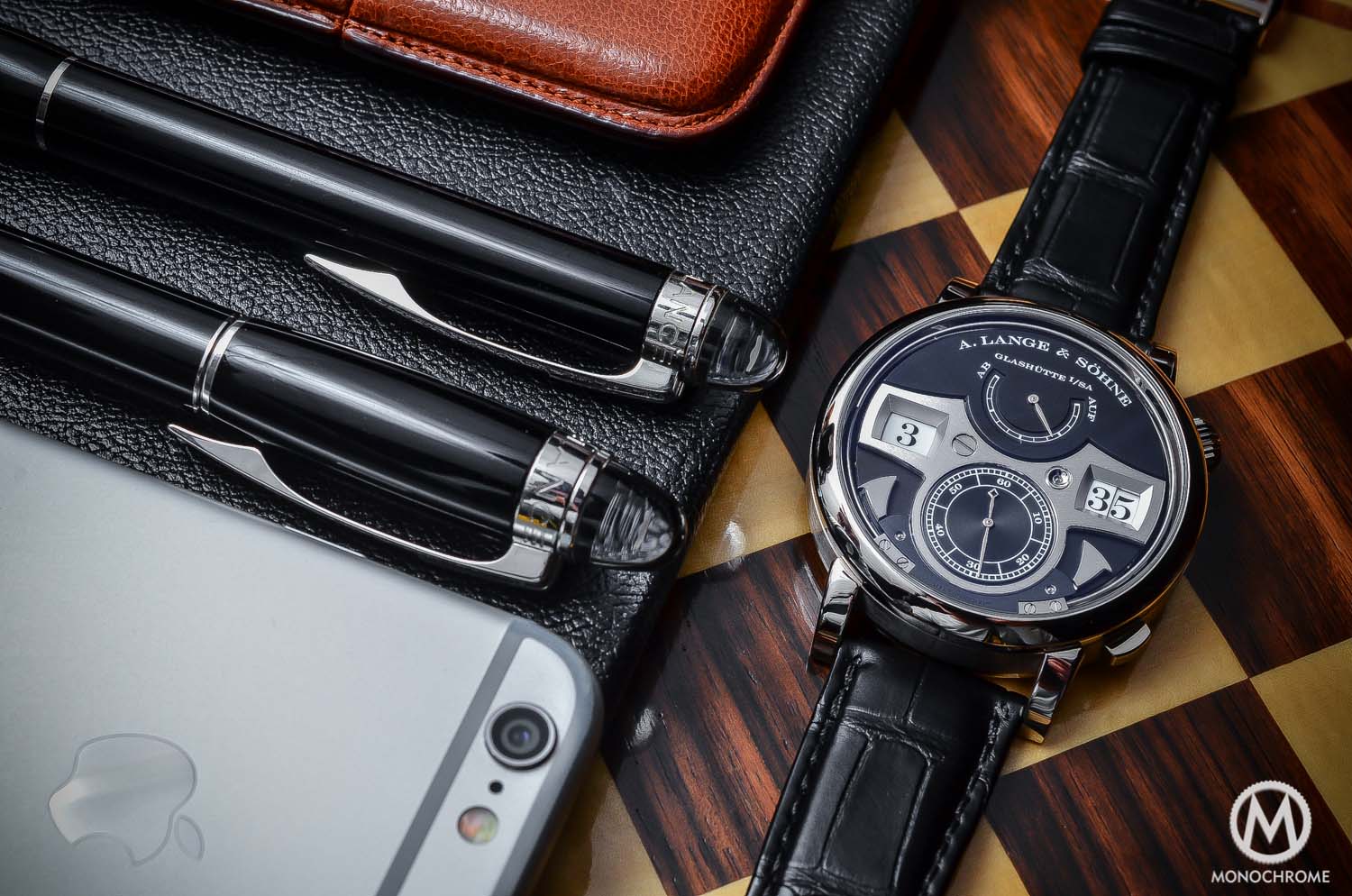

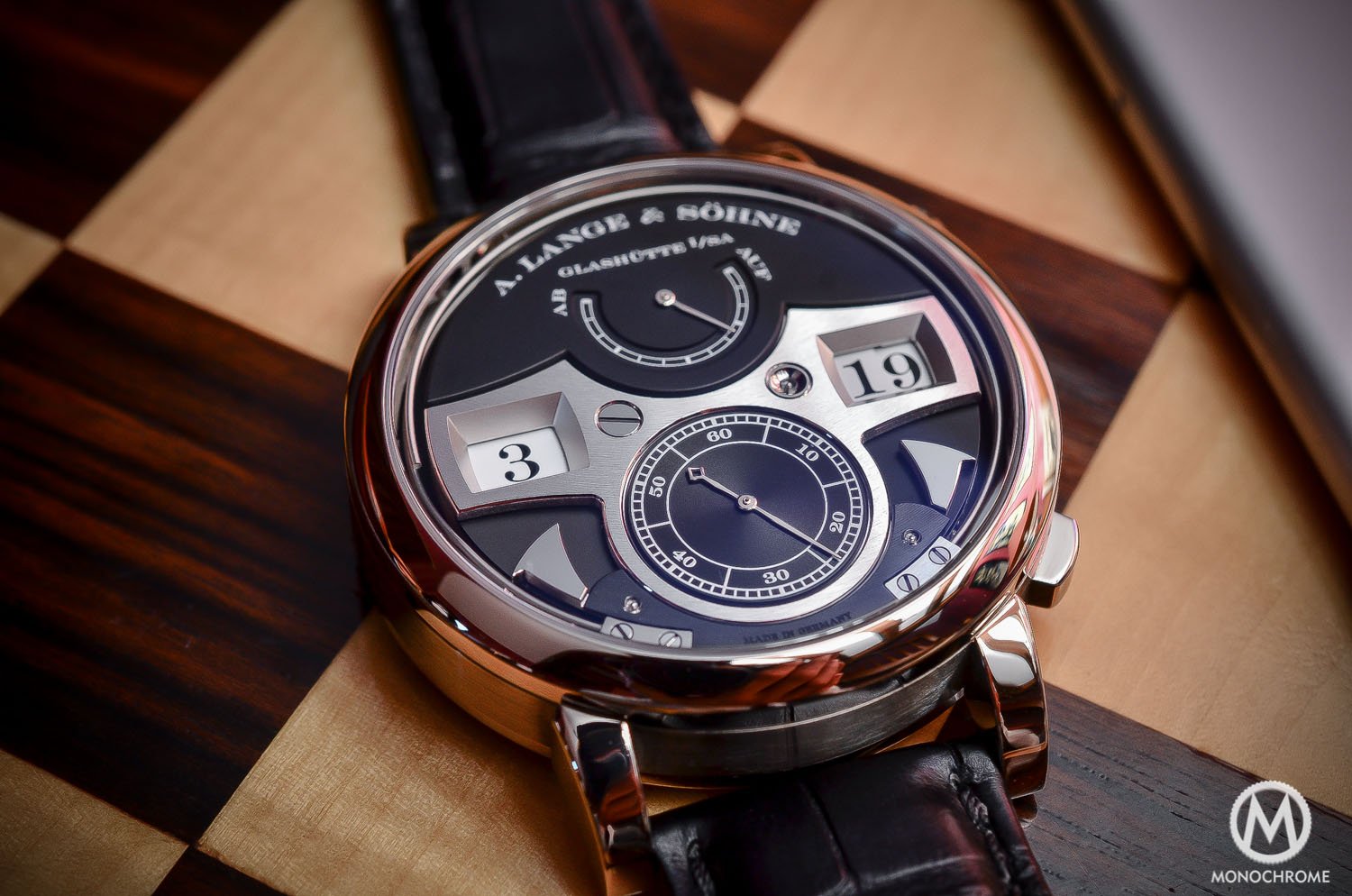
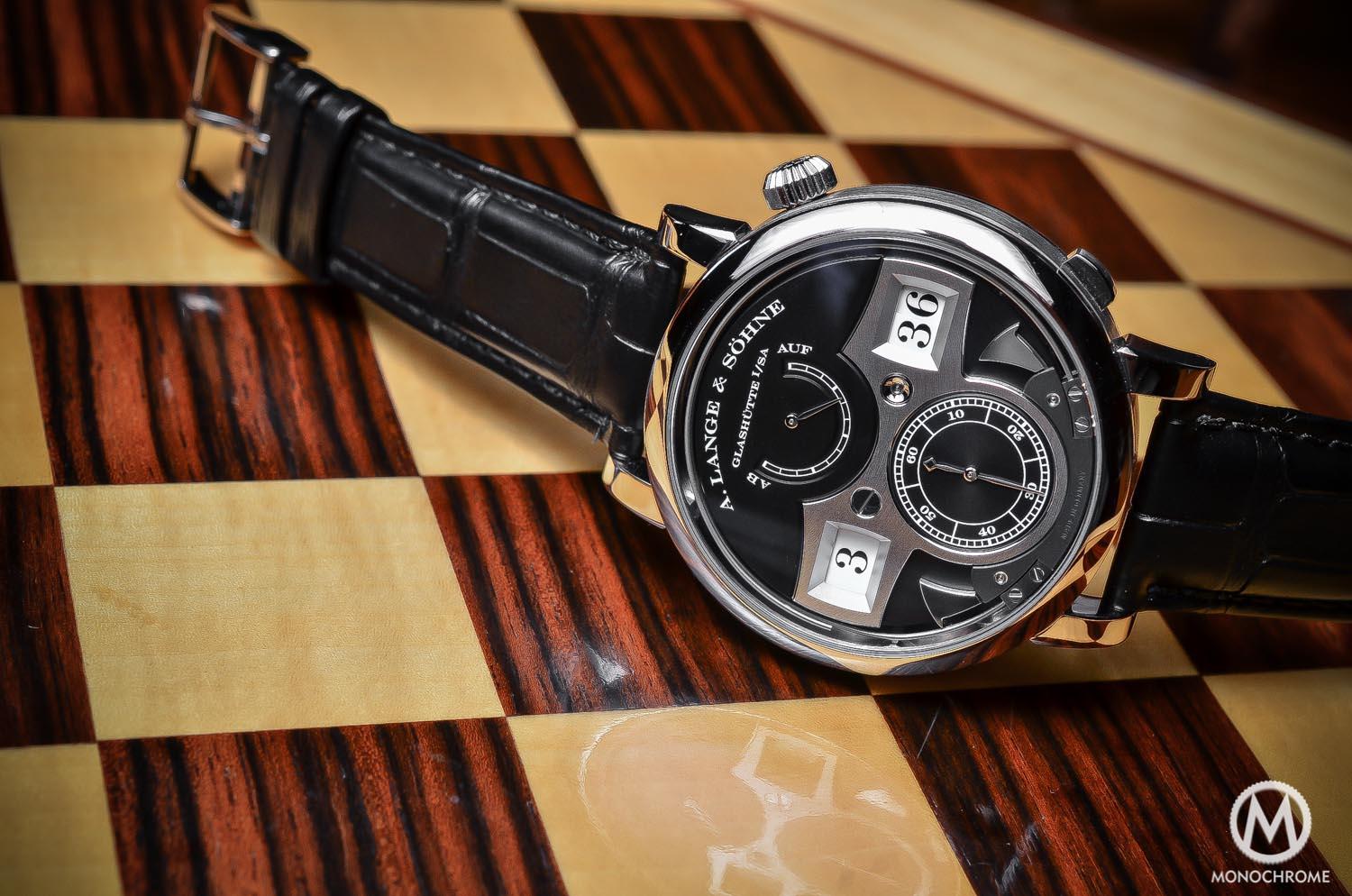
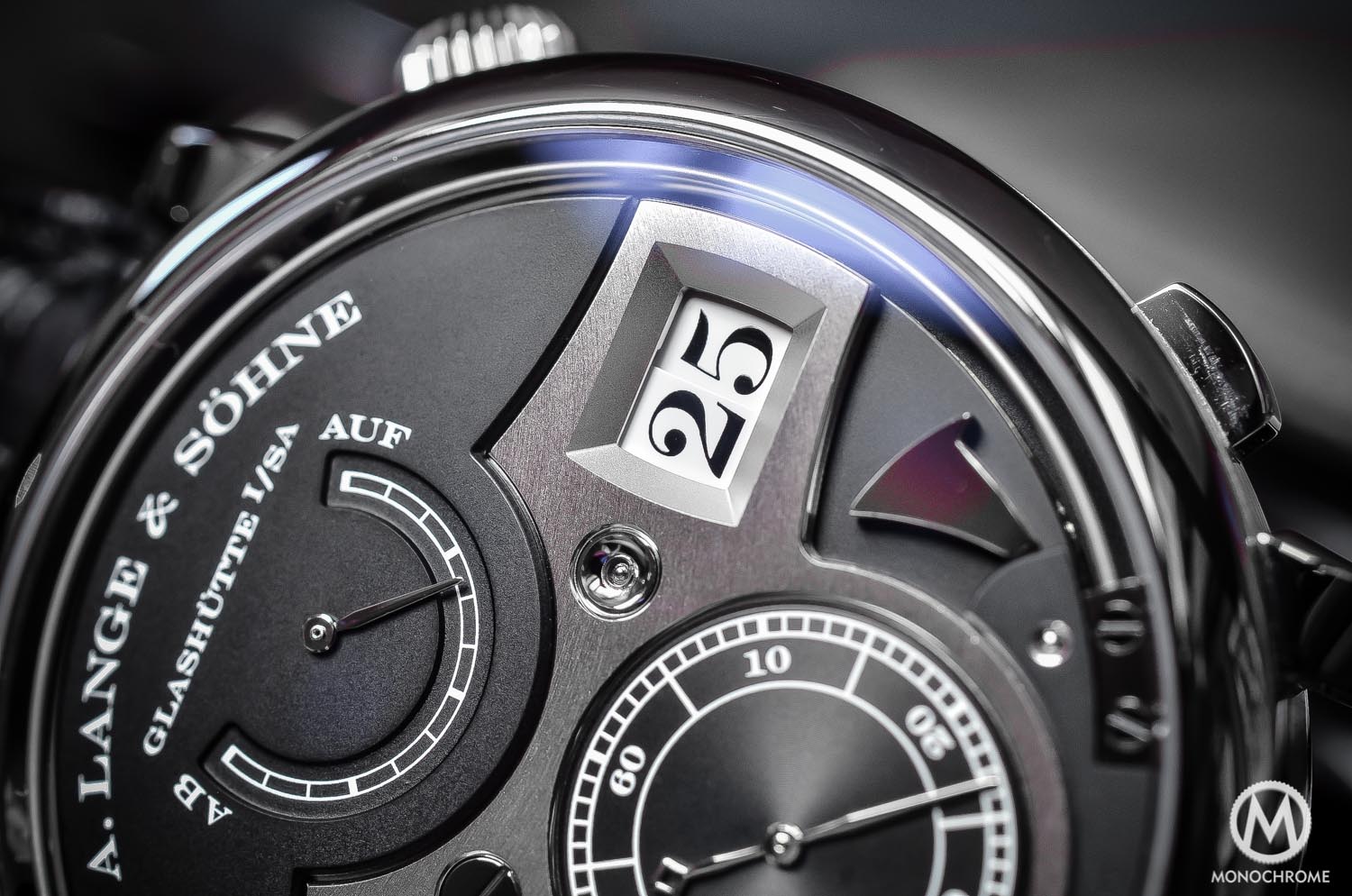
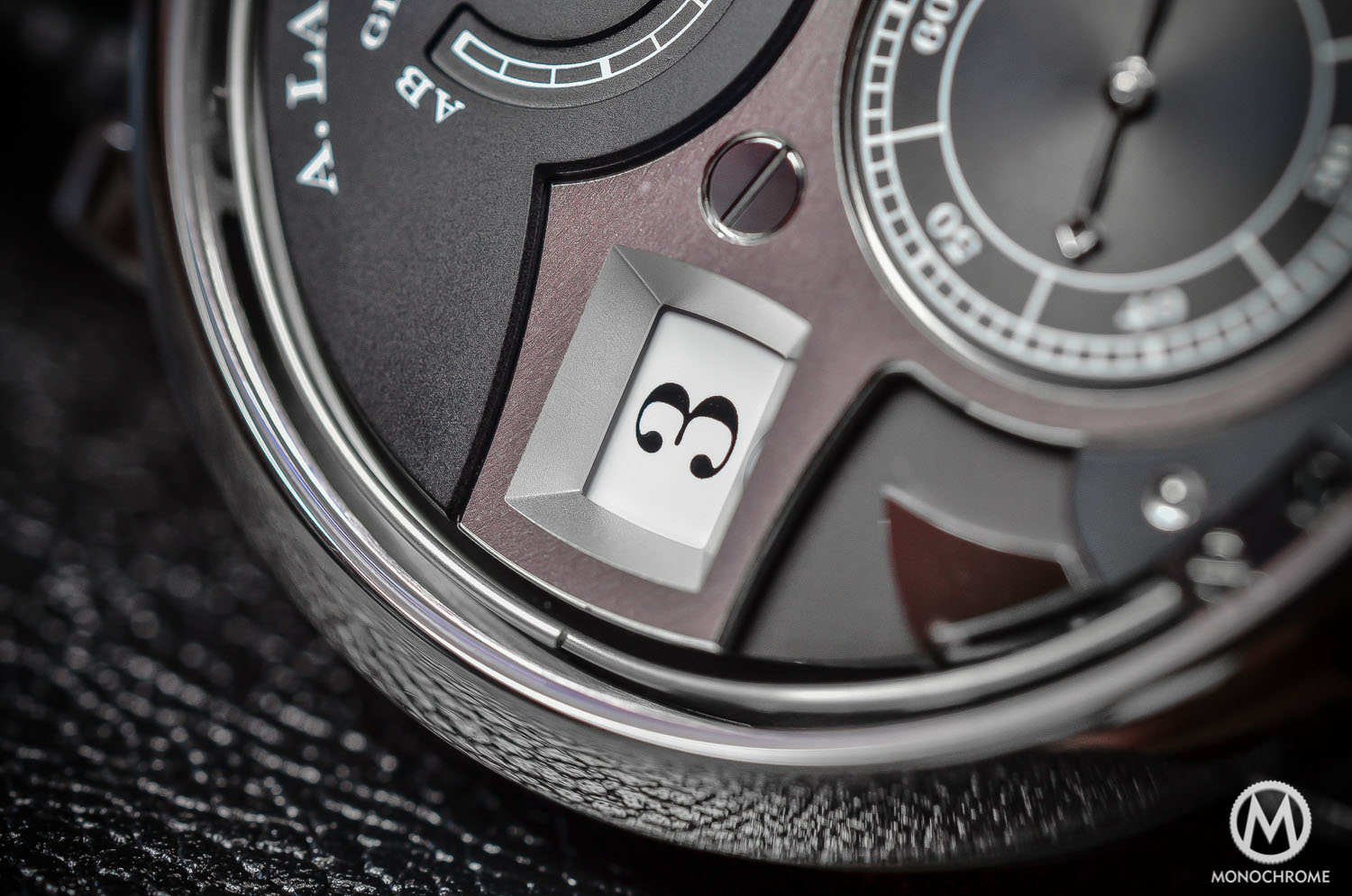
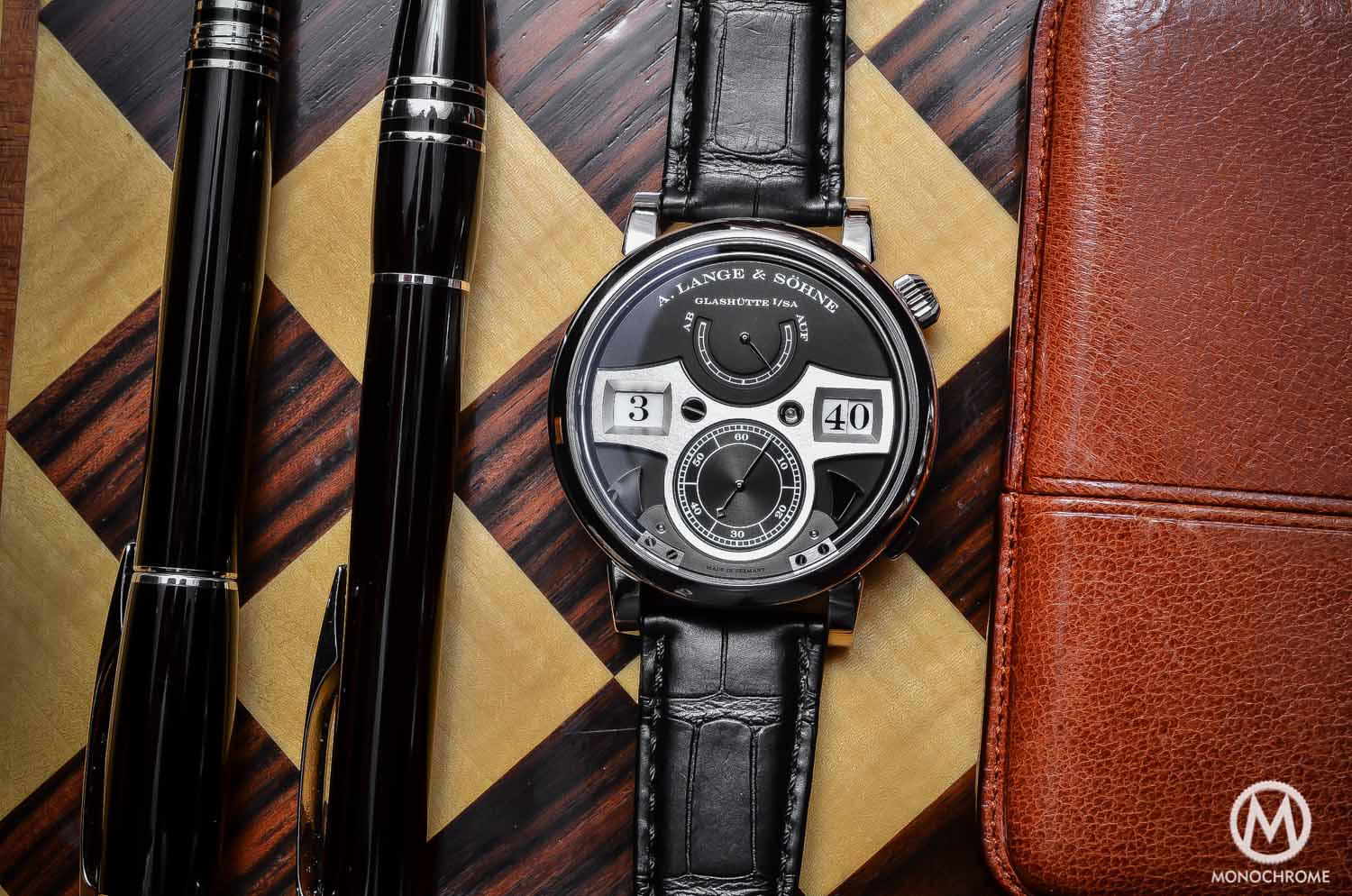
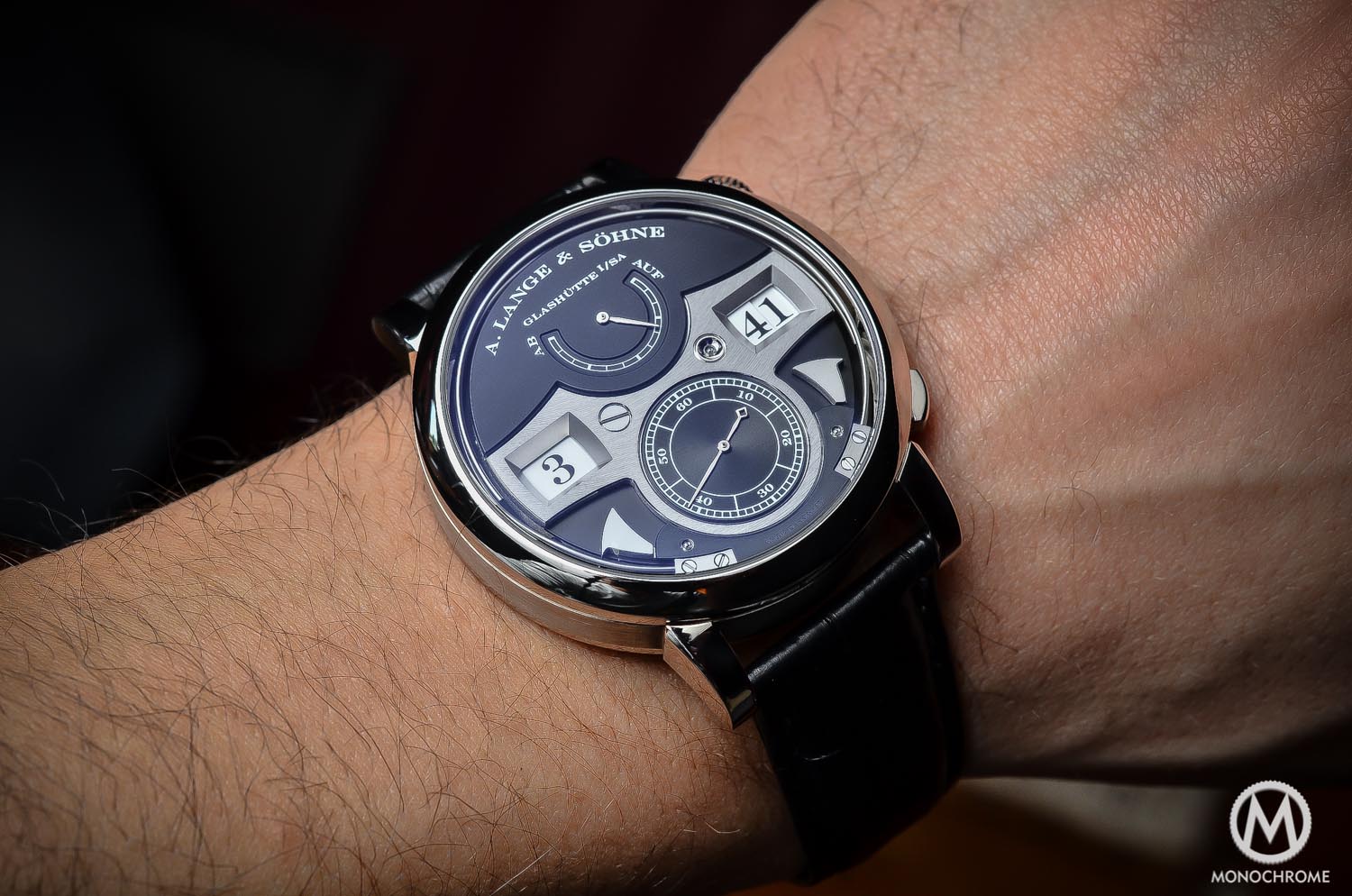
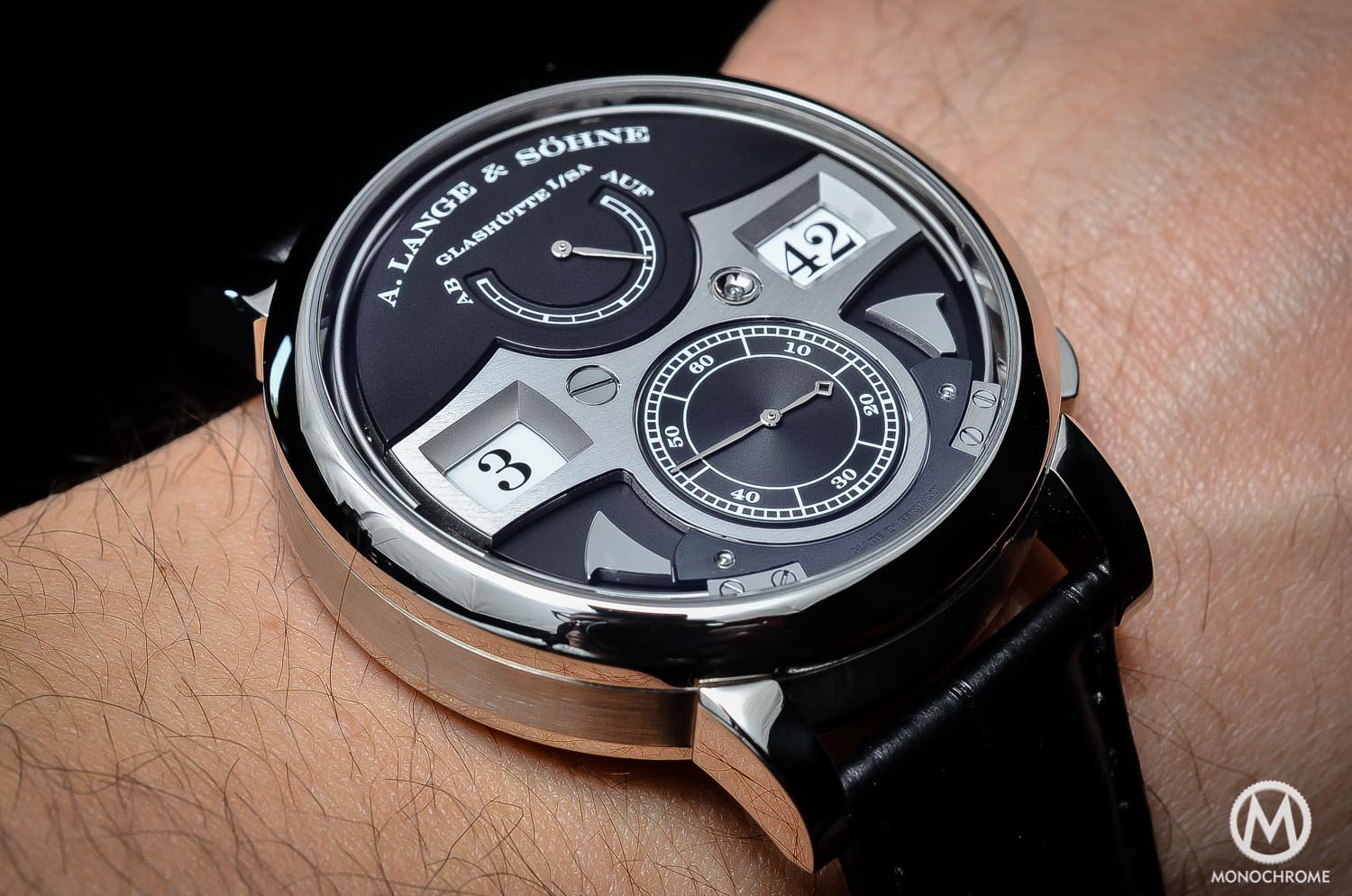
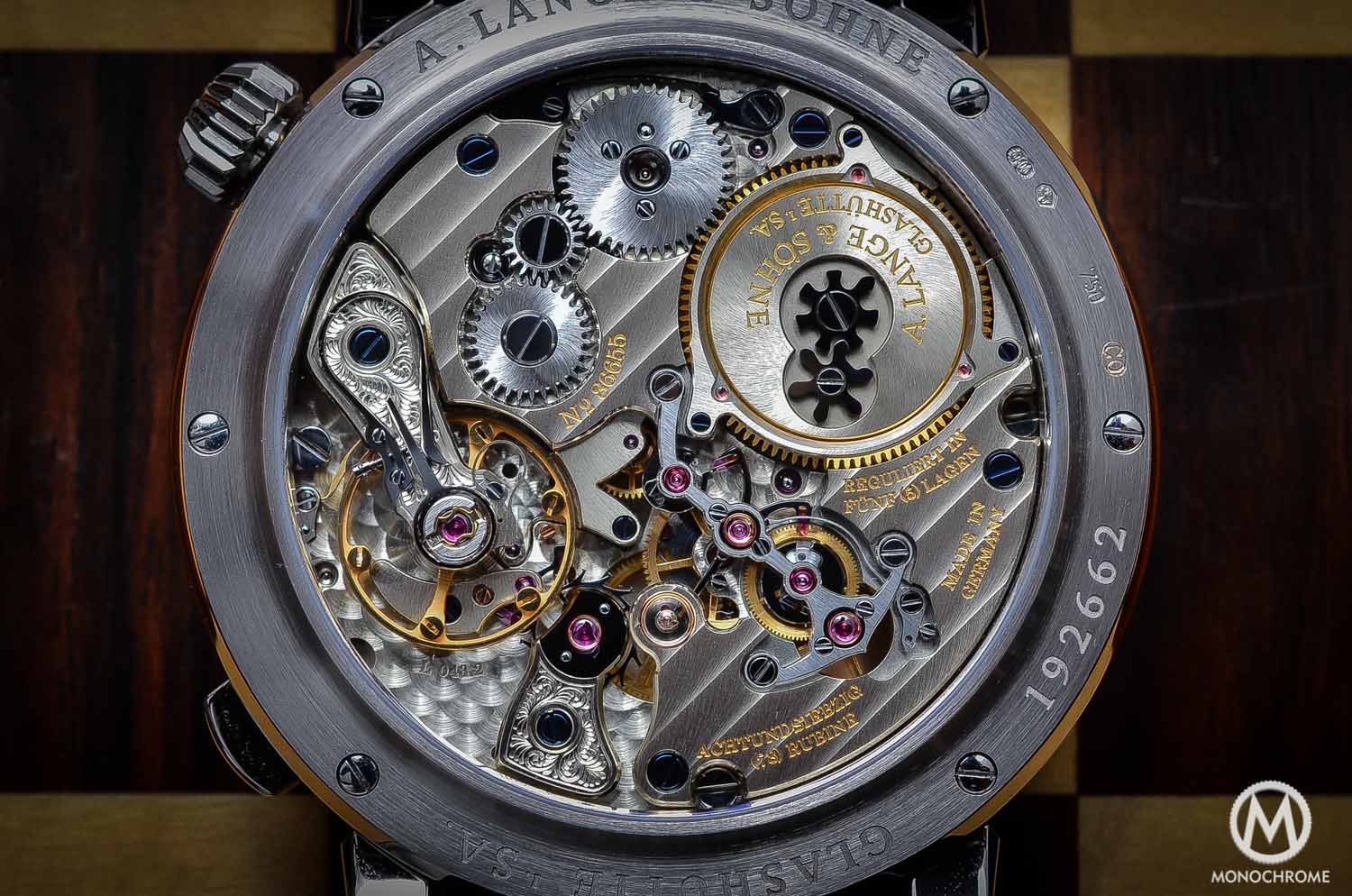
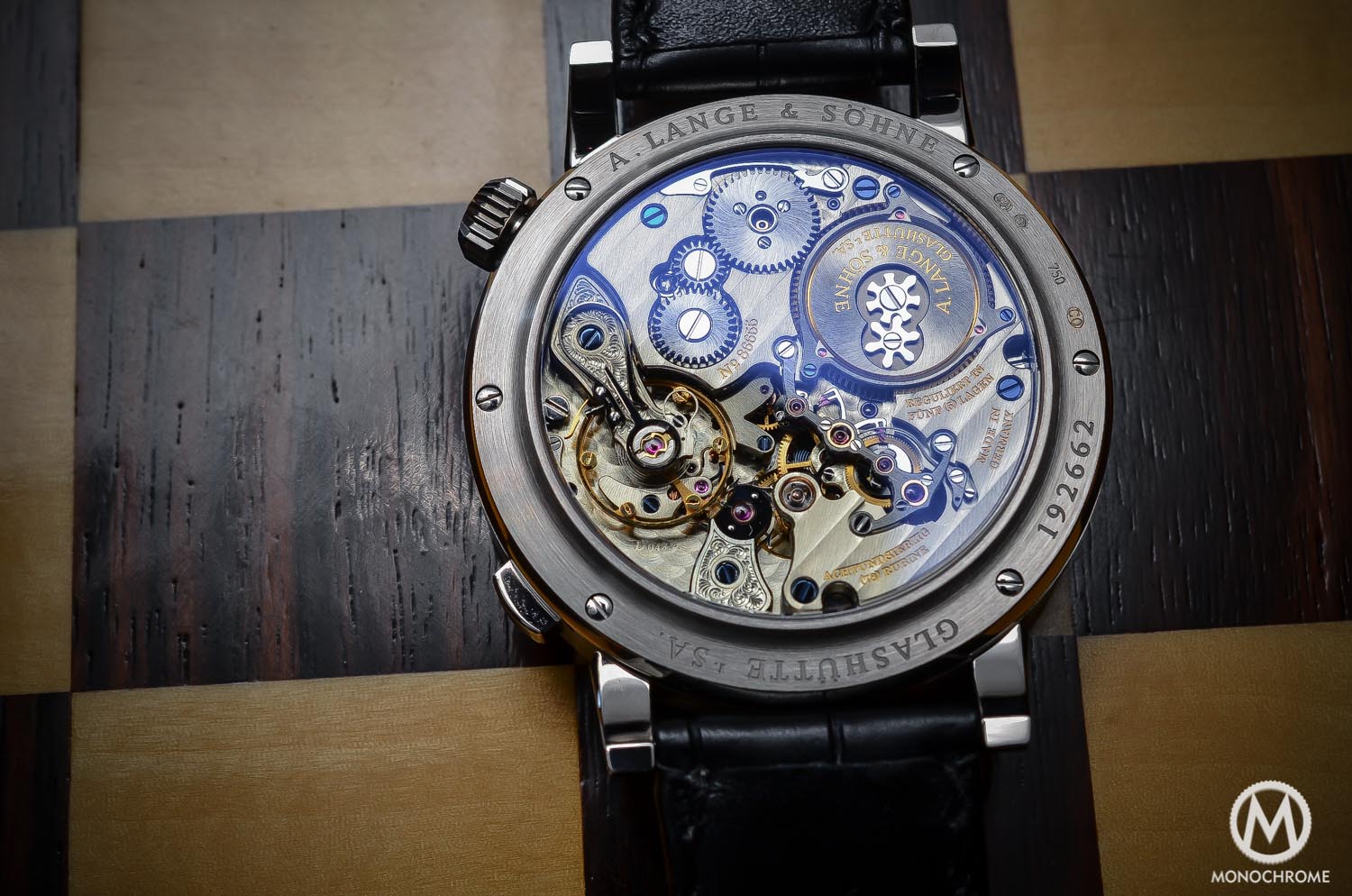

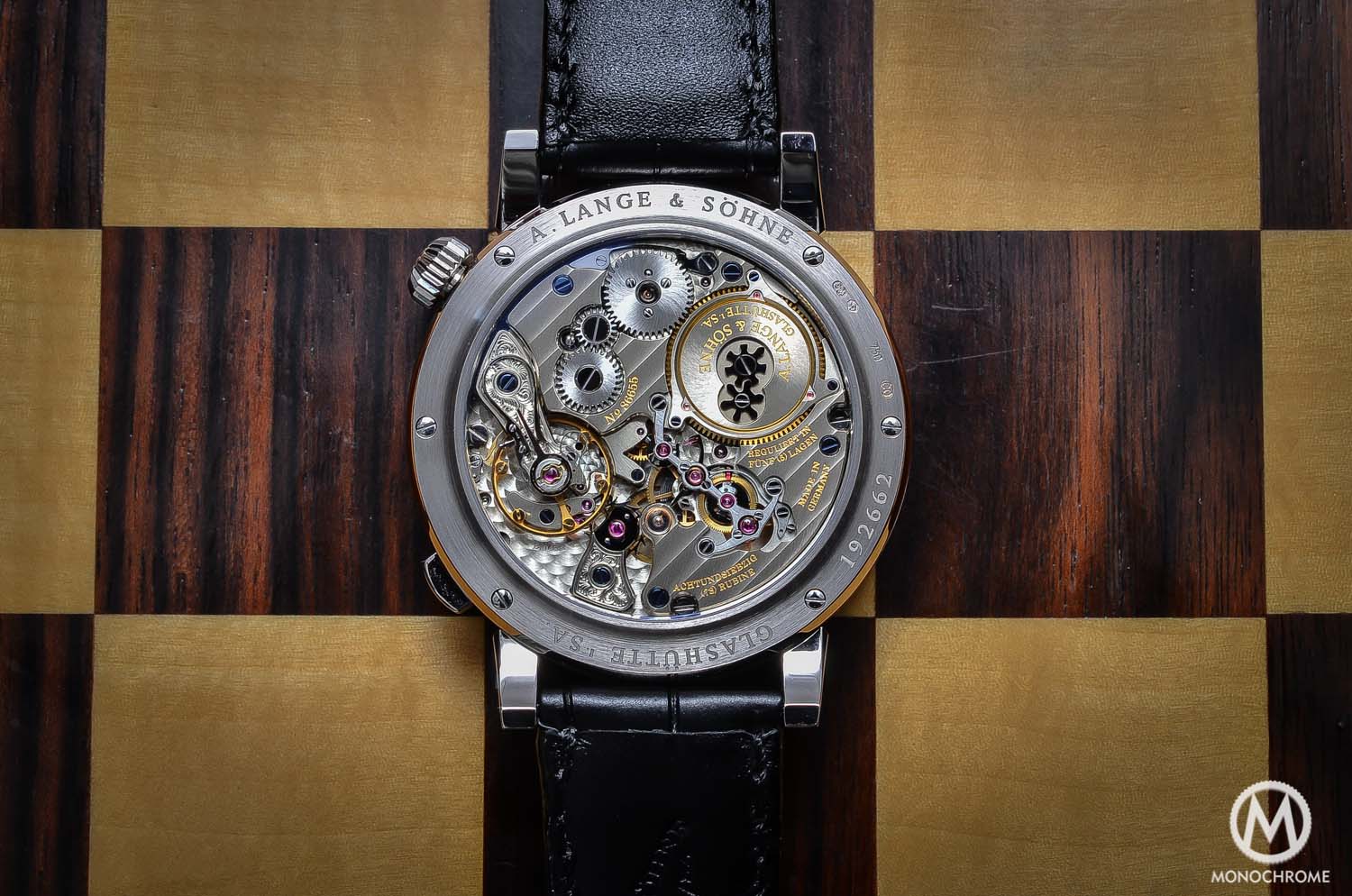
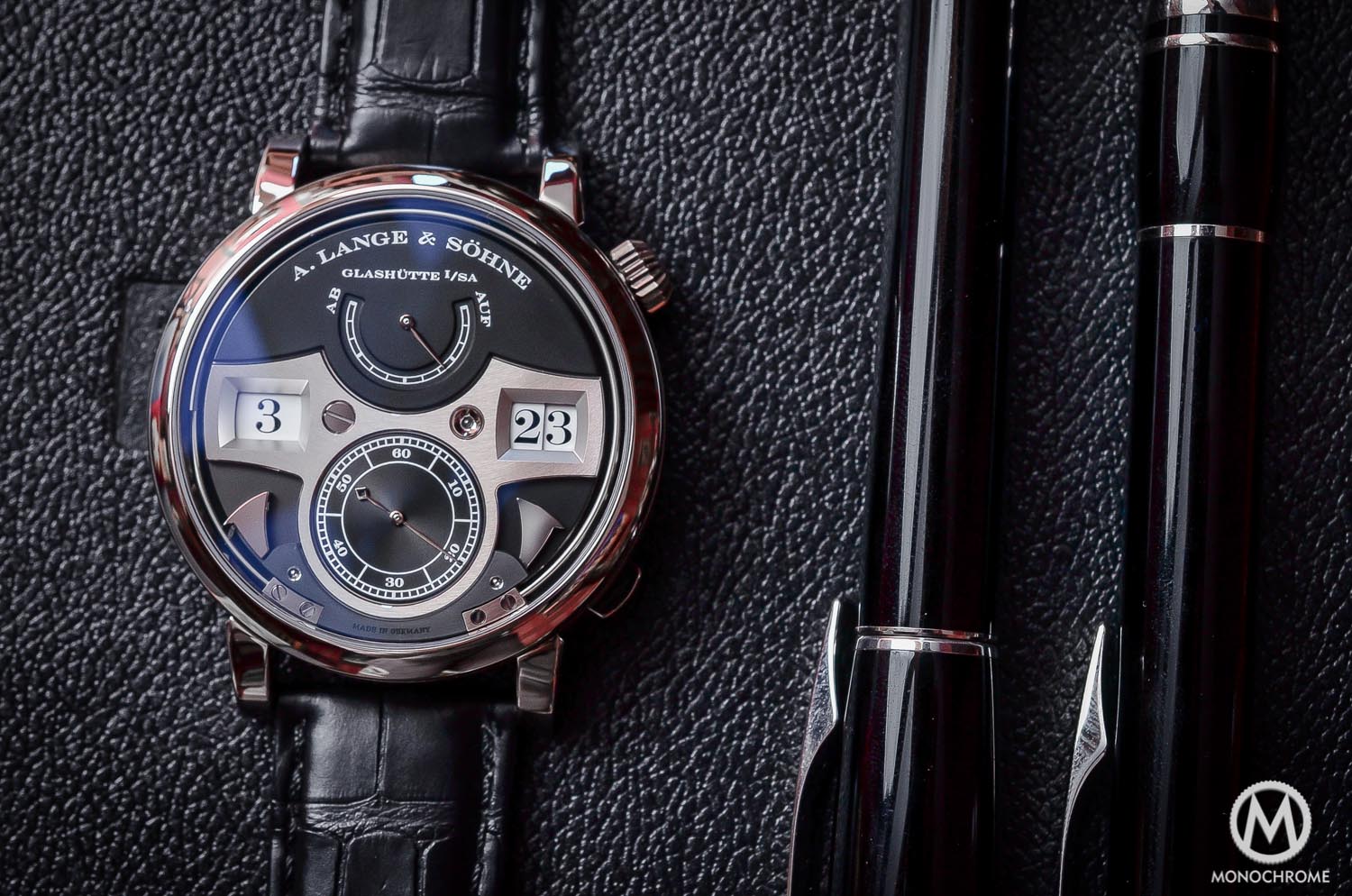



7 responses
A very interesting article and beautiful photographs. I fully agree with the assesment of the auther that these watches are masterpieces. One suggestion, though, please have an editor go through and thoroughly read each article before publication; there are number of editorilal, spelling and grammatical errors in this otherwise fine article.
**author, not auther….even I need an editor! 😉
Not enough superlatives to describe this watch and Lange in general. Hands down the best looking movements in the business. And regardless of context, the words entry-level and Saxonia should never be used together…
Beautiful. My first stop after I win lotto.
Can I ask a boring question please… What’s the song in the video? Very cool.
Are you sure it’s not 440 K€, instead of 110 ?
The Zeitwerk Decimal Repeater is €440k. We covered that one here: https://monochrome-watches.com/a-lange-sohne-zeitwerk-minute-repeater-featuring-a-decimal-minute-repeater/
The Zeitwerk Striking Time is €110k.
Just bought this in the black and silver face. It’s stunning. And the crystal back reveals exacting craftsmanship that is breathtakingly impressive. I absolutely love it.